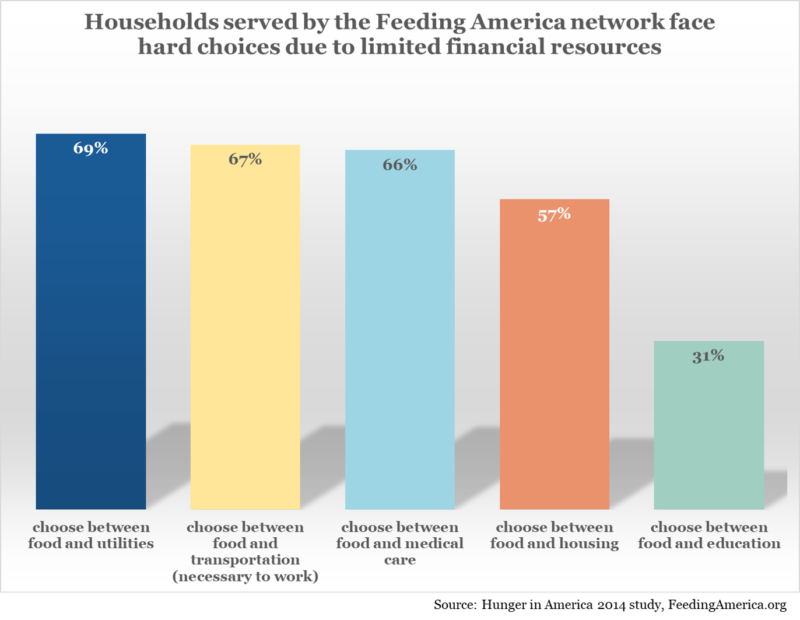Food Insecurity: Hunger in America
Have you ever had to choose between buying enough food for the month or paying your rent?
Has there ever been a time when you needed medication, but after paying for it you had to skip a meal or two…or more?
Millions of families in the United States grapple with food insecurity everyday and are forced to make these types of choices.
A household that is “food insecure” is either uncertain about or unable to provide enough food to feed everyone under their roof because of a lack of money. Situations like layoffs at work, unexpected car maintenance or a sudden trip to the ER can lead a family to make hard choices. In 2018, the USDA published Household Food Insecurity and reported that more than 37 million people in the United States struggled with hunger. That same report noted that more than 11 million children lived in food-insecure households.

As unemployment has increased due to the coronavirus pandemic, the percentage of families who are considered food insecure has dramatically increased and is already higher than during the Great Recession in the early 2000s. Due to the effects of the pandemic, it is now estimated that more than 54 million people may experience food insecurity in 2020, including a potential 18 million children.
Food insecurity touches all communities, but the surge related to the effects of the coronavirus pandemic is particularly stark among Black and Hispanic households. This troubling trend was recently presented in an article published by Politico discussing a new research study of U.S. Census Bureau data conducted by Northwestern University economists. The study indicates that 39% of Black households with children are food insecure today, up from 25% in 2018. For Hispanic households with children, 37% are food insecure today compared with 17% in 2018. Among white households with children, 22% report being food insecure now compared to 11% in 2018.
Food insecurity is an issue that has an impact across age boundaries as well. Hunger among older adults aged 60+ is projected to reach 8 million people in the next 20 years. The Feeding America network estimates that 63% of senior households are forced to choose between food and medical care. Food insecurity is also an issue impacting college students. The number of college students who are financially independent has increased. They are working while attending school, may be balancing parenting along with those demands, and are likely struggling to make ends meet. As a result, their ability to achieve academic and professional goals can be derailed.
The effects of food insecurity and hunger can be life-altering, especially for children. They are more likely to struggle academically, repeat a grade in elementary school, have developmental delays, and struggle with behavioral issues. Adults, as well as children, facing hunger are at higher risk of health conditions such as asthma, diabetes, and heart disease.
For this year’s President’s Project, I ask you to join me in addressing food insecurity and hunger in each of our communities. As we develop ways to stock pantries with healthy choices, partner with social service agencies and others to increase healthy options in food deserts, distribute food at mobile pantries, deliver meals to vulnerable populations, or assist with community gardens, Omega Phi Alpha’s impact will make a difference to families in need. By educating others in our circles of influence about the levels of food insecurity that have emerged due to the impact of coronavirus, we can raise awareness about this critical need in our communities.
Let’s work together so that choosing between food or rent is never a decision someone has to make.
Forever in Service,
Jan Titsworth
National President
